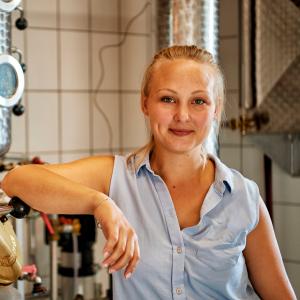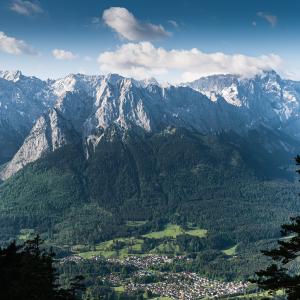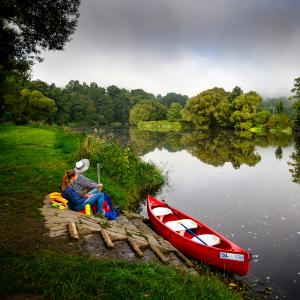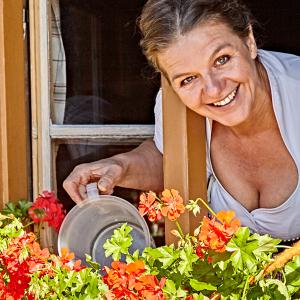The regions of Bavaria
Upper Bavaria, Franconia, East Bavaria and the Allgäu / Bavarian Swabia are rich in natural beauty and grown cultural landscapes with lots of good old traditions. But in the Free State, your customers will also experience vibrant young towns and cities with a great deal of historical charm – and a culture of enjoyment which gives a lot of pleasure. And it's all spread out over no fewer than four large regions. Here are some of Bavaria's highlights.
Allgäu / Bavarian Swabia
The magnificent scenery of the Alps, barren moor landscapes, pristine lakes and culture-oriented little towns with history: Bavaria's outpost in the south-west of the federal state features gentle hills, and it's green, inspiring, and full of sunshine. Here, the double-barrelled name also stands for double diversity: the fact is that the Allgäu extends from the almost mediterranean Lake Constance in the west to the wild mountain river Lech in the east, from the lovely old town of Memmingen in the north to the Alps down near Oberstdorf. By contrast, Bavarian Swabia lies between the impressive meteorite crater known as the Ries near Nördlingen, the primordial riverside forests on the Danube and that picturesque pre-alpine countryside.
Other features include the world-famous fairy-tale castle at Neuschwanstein – hiking, cycling, skiing and water sports – the Nebelhorn and Hochgrat peaks – the baroque treasure of the Benedictine Abbey in Ottobeuren – the interesting Roman conurbations of Kempten and Augsburg – the viehscheid in the autumn (a festival centred around the return of grazing animals to the valleys) – fine cheese specialities, cheese spätzle and maultaschen (pasta squares with various fillings).
Tourismusverband Allgäu / Bayerisch-Schwaben e. V.
Phone: +49 821 45 04 01 0
Email: office@tvabs.de
Franconia
In the north of Bavaria, there is a region that has everything and attaches a great deal of importance to enjoyment. Franconia – forests, rivers such as the Main and the Regnitz, lakes, low mountain ranges such as the Fichtel Mountains and the Spessart, wine-growing areas, and the densest concentration of breweries in the world. With an area of approximately 14,000 square kilometres, Nature parks cover almost half this holiday region. Not only that; there is also a particularly large number of public festivals and fairs here. Towns and cities such as Bamberg, Würzburg and Nuremberg have world-class cultural treasures and places of interest. And on 40,000 kilometres of well signposted hiking trails, activity holidaymakers can experience delightful towns with half-timbered houses, and castles too, right in the midst of endless Nature.
Other features: the Wagnerian town of Bayreuth – romantic Rothenburg ob der Tauber – the long-distance hiking trail 'Frankenweg' – the quality cycling route 'Lovely Tauber Valley (the Classic)' – thermal salt-water springs – Franconian wine in a bocksbeutel (a special type of bottle) – the speciality known as schäufele (baked pig's shoulder) – the Rhön Mountains, the Frankenwald, and the canoeing paradise of the Altmühl Valley.
Franconian Tourist Board
Phone: +49 911 94 15 10
Email: info@frankentourismus.de
Travel trade & media service: medienservice.frankentourismus.com
Upper Bavaria
The special features of Upper Bavaria include high mountains, living traditions which are often freshly interpreted, splendid costumes, and the delightful, cosmopolitan state capital of Munich. Upper Bavaria is the country between the rivers Lech and Salzach, between the Altmühl Valley, the Bavarian Alps and the Chiemgau. The mountains here extend right up to the horizon – and from the Wetterstein mountains to the west, via the Karwendel range to the Berchtesgaden Alps. Scenic lakes such as the Schliersee and the Königssee invite visitors to gasp in admiration while they walk or cycle round them and enjoy the sheer tranquillity of it all. Apart from that, your customers will find innumerable favourite places on wonderful bathing lakes in Upper Bavaria. And there's Germany's highest peak too, the Zugspitze (2,962 m). The view from the summit in good weather? Simply tremendous …
Other features: Herrenchiemsee Castle – the world's longest castle in Burghausen – the hop-growing region of Hallertau – veal sausages with brezn (pretzels), schweinsbraten (roast pork) with knödeln (dumplings) or obatzda, a spicy cheese speciality – the highland lake Spitzingsee – the surfers' paradise Walchensee – the Maximiliansweg in the Ammergau Alps – the Passion Play in Oberammergau – and Berchtesgaden with the Watzmann and the Königssee.
Tourismus Oberbayern München e. V.
Phone: +49 89 63 89 58 79 0
Email: info@oberbayern.de
East Bavaria
Europe's largest forest landscape, with the Bavarian Forest national park, the broad Danube plain and hilly pastureland, characterises East Bavaria, which is lonesome but has a wealth of Nature. The region extends from Eggenfelden in the south to Marktredwitz in the north, and from Neumarkt to Passau. Apart from tranquillity and nativeness, its particular distinctive features are first-class thermal springs and a craft tradition which produces some particularly fragile beauties: there are still a good many glass blowers in East Bavaria. And with a length of 250 kilometres, Bavaria's Crystal Road is one of Germany's most beautiful holiday routes. Having said that, East Bavaria is by no means too lonesome: you should definitely recommend your customers to pay brief visits to the UNESCO World Heritage town of Regensburg, and to Passau, the 'city of three rivers'.
Other features: fish-farming in the country of a thousand ponds – health holidays in Bad Füssing, Bad Griesbach, Bad Birnbach and Bad Gögging – the beer speciality Zoigl (an unfiltered, bottom-fermented beer) – Europe's largest e-biking region – the long-distance hiking trail and Top Trail Goldsteig – and the castles of Falkenstein, Dagestein, Mitterfels and Prunn.
Tourismusverband Ostbayern e. V.
Phone: +49 941 58 53 90
Email: info@ostbayern-tourismus.de



